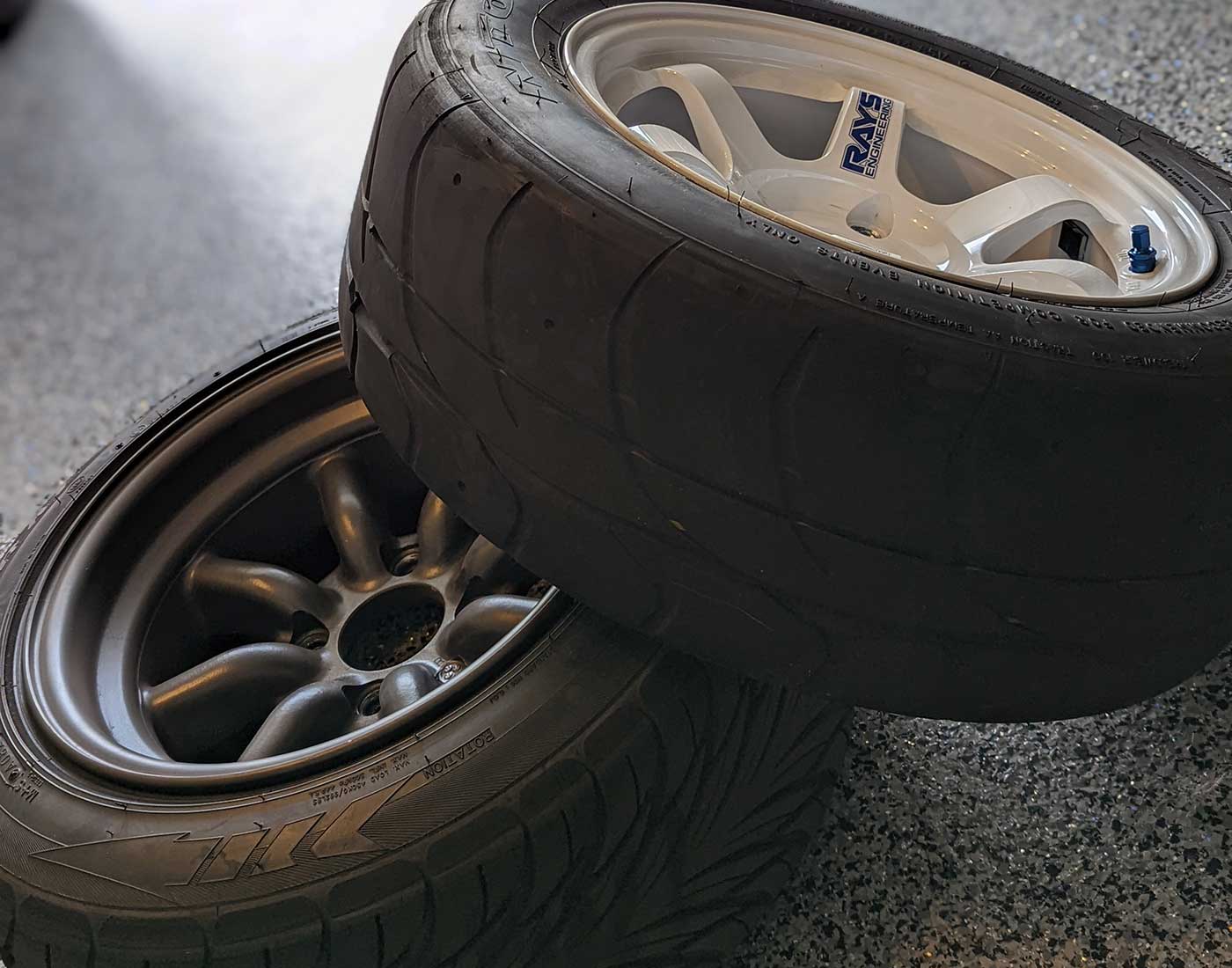All Categories
Featured
Table of Contents
The Michelin provided a comfy driving experience, characterised by responsive guiding and a modern understeer balance. Despite the cooler testing problems, Michelin's regular time and hold over 3 laps suggests its suitability for real-world applications.
The tyre's very first lap was a 2nd slower than the second, aiming to a temperature-related hold rise. For day-to-day usage, the Michelin might be a more secure bet.
Trusted Cheap Car Tyres Near Me
It shared Michelin's risk-free understeer equilibrium however did not have the latter's desire to transform. Continental and Goodyear's performances were significant, with Continental's brand-new PremiumContact 7 revealing a considerable renovation in wet conditions compared to its precursor, the PC6. This model was much much less conscious fill modifications and acted just like the Michelin, albeit with somewhat less communication at the limit.
It incorporated the risk-free understeer equilibrium of the Michelin and Continental with some flashy handling, verifying both foreseeable and fast. As an all-rounder for this Golf GTI, Goodyear's Uneven variety was the standout, demonstrating remarkable performance in the damp. Finally, the Bridgestone Potenza Sporting activity took the crown as the fastest tire, albeit by a little margin.
This tire got grippier as it heated up, comparable to the Yokohama. Chauffeurs looking for an interesting wet drive might discover this tyre worth considering. The standout entertainer in wet stopping was the latest tyre on examination, the PremiumContact 7, though the results are nuanced. We conducted damp stopping examinations in three different methods, two times at the new state and when at the used state.
Tyre Fitting Near Me (Landsdale)
Ideally, we desired the cool temperature level examination to be at around 5-7C, yet logistical hold-ups implied we evaluated with an ordinary air temperature of 8C and water at 12C. While this was cooler than typical examination conditions, it was still warmer than real-world conditions. The cozy temperature level examination was done at a standard of 18C air and 19C water.
The 3rd run involved damp braking tests on used tyres, especially those machined to 2mm with a little encounter. While we meant to do more with these used tires, weather restraints limited our screening. It's worth keeping in mind that wet braking is most essential at the worn state, as tires usually boost in dry conditions as they put on.

It shared the most significant performance decrease, alongside the Yokohama, when used. Bridgestone, Goodyear, and Michelin saw the least efficiency decrease when worn. Bridgestone and Goodyear's performance dipped in cooler conditions. The Hankook tyre registered the smallest performance drop as temperature levels cooled down, but it was amongst one of the most impacted when used.
High-performance Tyres
The take-home message below is that no single tire excelled in all elements of wet braking, suggesting a complex interplay of factors affecting tire efficiency under different conditions. There was a standout tyre in aquaplaning, the Continental completed top in both straight and rounded aquaplaning, with the Michelin and Goodyear additionally great in deeper water.

Yokohama might take advantage of slightly more grasp, a problem potentially influenced by the colder conditions. As for taking care of, all tires performed within a 2% array on the lap, showing their high-quality performance (Tyre maintenance). Thinking about these tyres essentially target the same consumer, it's fascinating to observe the substantial distinctions in feel.
The shock is since the PremiumContact 6 was just one of my favourites for flashy dry drives, however its follower, the PremiumContact 7, seems elder and resembles Michelin's performance. Amongst these, Hankook was the least accurate in guiding and interaction at the restriction. Cheap tyres. Both Michelin and Continental offered beautiful first guiding, albeit not the fastest
If I were to suggest a tire for a rapid lap to a newbie, say my daddy, it would be among these. Then we have the 'fun' tyres, particularly Yokohama and Bridgestone. Both were swift to steer and really felt sportier than the others, but the compromise is an extra spirited back side, making them more tough to deal with.
Tyre Warranty Near Me – Landsdale
It gave comparable steering to Bridgestone however used much better responses at the restriction and better hold. The Bridgestone Potenza Sport, however, appeared to deteriorate fairly rapidly after simply 3 laps on this demanding circuit. There's Goodyear, which placed itself somewhere in between the enjoyable tires and those often tending towards understeer.
All in all, these tyres are excellent entertainers. In terms of tire wear, the approach used in this test is what the sector refers to as the 'gold criterion' of wear.
Both the Bridgestone and Yokohama tires considerably underperformed in contrast to the other four tires in regards to rolling resistance, with Continental slightly outshining the rest. Regarding the comfort level of the tires, as expected, a lot of demonstrated an inverted connection with handling. The Continental, Michelin, and Goodyear tyres carried out ideal across numerous surface area types examined.

Bridgestone started to reveal indicators of firmness, while Yokohama was particularly rough over holes. We did determine internal noise levels; nonetheless, as is commonly the instance, the outcomes were carefully matched, and as a result of weather restrictions, we were incapable to carry out a subjective analysis of the tires sound. Finally, we looked at abrasion figures, which determine the amount of tyre walk shed per kilometre, normalised to a one-tonne lorry.
Discount Car Tyres Near Me
This number represents the amount of rubber dirt your tires generate while driving. Michelin led in this group, producing over 9% less rubber particulate matter. On the various other hand, Hankook created 32% more. This is an element I think the industry must focus on even more in the future, and it's something Michelin is promoting.
Latest Posts
Top Tyre Fitting
Leading Cost-effective Car Tyres – Middle Swan
Best Wheel Balancing Services